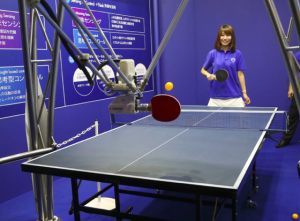So you’re finally getting the hang of ping pong and are even starting to get good at it. But if you’re really serious about the game, you need to know that good technique isn’t enough. Visit Ping Pong Beast for more information. Understanding the basic terminology that your opponents have mastered is one of the major factors that get you ahead.
To truly get into the table tennis sport, you need the right equipment, perhaps some Cheap Ping Pong paddles, and fundamentally solid techniques. Experimentation is also key to your advancement. However, before you get to all that, you must learn the basics. Your shot may have been a good one, but can you name it? You’re aware that what your opponent did was a fault, but do you know why?
A proper grasp of common table tennis terms is part of what makes you a legit table tennis player. You’ll need the best ping pong paddle you can find to reach your potential, but before that, you have to talk the talk. This is a mini glossary of ping pong terms and concepts to help get you started with the sport on a good note.
1. Umpire
What better term to start with than the one that refers to the official controlling the match? You need to know that in table tennis, and many other similar sports for that matter, the umpire is a god; they will always get the last say.
2. Assistant Umpire
Like the umpire, the assistant umpire is appointed a certain level of control over the match, mostly to deal with certain calls that the umpire isn’t in the best position to make. This official’s main role is to support the umpire.
3. Backhand
To think you have a pretty good one, too! This is a shot executed where the back of a player’s hand is facing the opponent.
4. Backspin
A kind of spin that players usually go for when making defensive shots. It’s basically done by chopping down on the ping pong ball to produce a spin wherein the bottom part of the ball moves away from you.
5. Block
This is a shot with topspin executed close to the table with the bat making early contact with the ball. This shot is usually played in response to a smash or an extremely offensive stroke made by the opponent.
6. Blocker
You have players that hit with power and others that go for variety. A blocker is what you call a defensive player using the block as their primary stroke.
7. Chop
This is a topspin return executed with a backspin, typically far and away from the table. The reason this happens a considerable distance from the table is because the receiving player is usually made to back off by the opponent’s strong serve.
8. Cross-Court
A cross-court shot that’s hit from one corner to another, diagonally. With a higher margin for error compared to the down-the-line strokes, these shots typically make up the most of medium- to long-length rallies.
9. Dead Ball
A shot that creates a really tricky ball to deal with. It’s when the ball that returns to a player practically has little or no spin at all.
10. Deep
A shot played “deep” bounces very close to a player, usually near the edge of the table, giving them little time to react or prepare for the next stroke. A mark of a good player is his or her ability to deal and counter deep and hard-hit shots.
11. Doubles
A table tennis match played between two teams comprising two players each where the players in each team alternate turn at hitting the ball.
12. Down the Line
A shot that causes the ball to travel parallel from one sideline to the other. It’s a stroke that has a low margin for error, which means a slight mistake in execution could result in an error or a point against the player making the shot.
13. Drive
A stroke delivered near the table with the racket arm driving in a forward and upward direction to the area where the player wants the ball to land. This is typically done to execute a powerful offensive stroke that pushes the opponent backward and draws an error from them.
14. Early
If you’ve heard the phrase “taking the ball early” and didn’t quite get it, that’s alright. That’s why you’re here. To enlighten you, this phrase means hitting a shot that gets your racket in contact with the ball almost immediately after it bounces.
15. Flat
A flat stroke is one that’s hit with less topspin and therefore flies low over the net. Many big hitters or offensive players typically hit consistent flat and deep shots to render their opponents on the defensive before they deliver the point-ending stroke.
Conclusion
So, there you have it: fifteen of the most common table tennis terms to get you started. Of course, as it is, we’ve barely just begun. But like what they say about any sport you want to enjoy: “It’s best to learn at your own pace.” If you want to be a master at table tennis or even just a decent player, it’s important to take to heart the basics, including the terms that shape your journey moving forward.
Another great way to get started with ping pong is to visit the website that can educate you on any and all things table tennis, any day.


